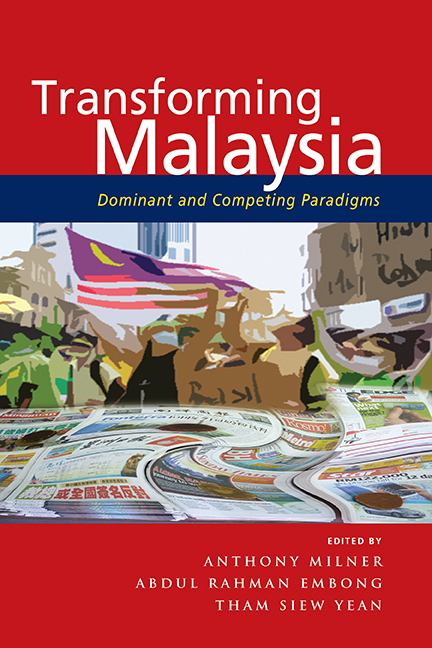Book contents
- Frontmatter
- Contents
- List of Tables and Figures
- Preface
- Acknowledgements
- List of Contributors
- 1 Introduction
- 2 Race and Its Competing Paradigms: A Historical Review
- 3 Knowledge Construction, the Rakyat Paradigm and Malaysia's Social Cohesion
- 4 Race Paradigm and Nation-Building in Malaysia
- 5 Race-Based Paradigm in Poverty Eradication and Income Distribution Analysis and Policy
- 6 Foreign Workers in Malaysia in the Post-Independence Era: Race Paradigm in State Policy, Academic Writings and Public Discourse
- 7 Trade Policy Formulation in Malaysia: Navigating between the Economic and Race Paradigms
- 8 National Security Conceptions and Foreign Policy Behaviour: Transcending the Dominant Race Paradigm?
- Index
5 - Race-Based Paradigm in Poverty Eradication and Income Distribution Analysis and Policy
Published online by Cambridge University Press: 21 October 2015
- Frontmatter
- Contents
- List of Tables and Figures
- Preface
- Acknowledgements
- List of Contributors
- 1 Introduction
- 2 Race and Its Competing Paradigms: A Historical Review
- 3 Knowledge Construction, the Rakyat Paradigm and Malaysia's Social Cohesion
- 4 Race Paradigm and Nation-Building in Malaysia
- 5 Race-Based Paradigm in Poverty Eradication and Income Distribution Analysis and Policy
- 6 Foreign Workers in Malaysia in the Post-Independence Era: Race Paradigm in State Policy, Academic Writings and Public Discourse
- 7 Trade Policy Formulation in Malaysia: Navigating between the Economic and Race Paradigms
- 8 National Security Conceptions and Foreign Policy Behaviour: Transcending the Dominant Race Paradigm?
- Index
Summary
INTRODUCTION
When analysing the issue of poverty and income distribution in the development literature, it is common for analysts to be guided by several paradigms as a framework for their analysis. These paradigms include the overall or total poverty incidence and income distribution in a country, followed by the strata (urban and rural) and the income class paradigms. In countries where there are state or provincial as well as regional differences, then it is also common for the problem of poverty and income distribution to employ the state/provincial and regional paradigms. However, the latter paradigms are not relevant for city-states like Hong Kong and Singapore, which are totally urban. The race1 paradigm, which is widely used in Malaysia, is not such a common framework of analysis. A few examples of countries in Asia that employ the race paradigm and publish some statistics based on ethnic groups are Sri Lanka and Vietnam. Most of the past studies have employed the vertical inequality (inequality between individuals or households) approach to analyse inequality. In recent times, where there are group differences between race, class, religion, etc., then the horizontal inequality (inequality between groups) concept, made known by Frances Stewart (2001, 2004) and Stewart et al. (2005), has also been employed, especially in utilizing it as a framework for affirmative action. This paradigm has also been introduced to Malaysia in the last decade.
Most of the current generation of Malaysians associate the idea of poverty eradication and income distribution analysis with the introduction of the New Economic Policy (NEP) in 1971. However, available evidence shows that this approach had been employed since the beginning of the colonial period. It was the British policy of “divide-and-rule” as well as the failure of integration of a large immigrant population with the local population that led to the continuation of the race paradigm. Other countries in Southeast Asia such as Indonesia, Philippines and Thailand that also received immigrants from China and to a lesser extent from India, do not incorporate ethnic aspects into their poverty eradication and income distribution strategies as their immigrants are well integrated with the local population. In these countries, integration was facilitated by speaking the same language, using local names, as well as practising similar religion as the locals by many immigrants, and through widespread intermarriage.
- Type
- Chapter
- Information
- Transforming MalaysiaDominant and Competing Paradigms, pp. 111 - 142Publisher: ISEAS–Yusof Ishak InstitutePrint publication year: 2014

